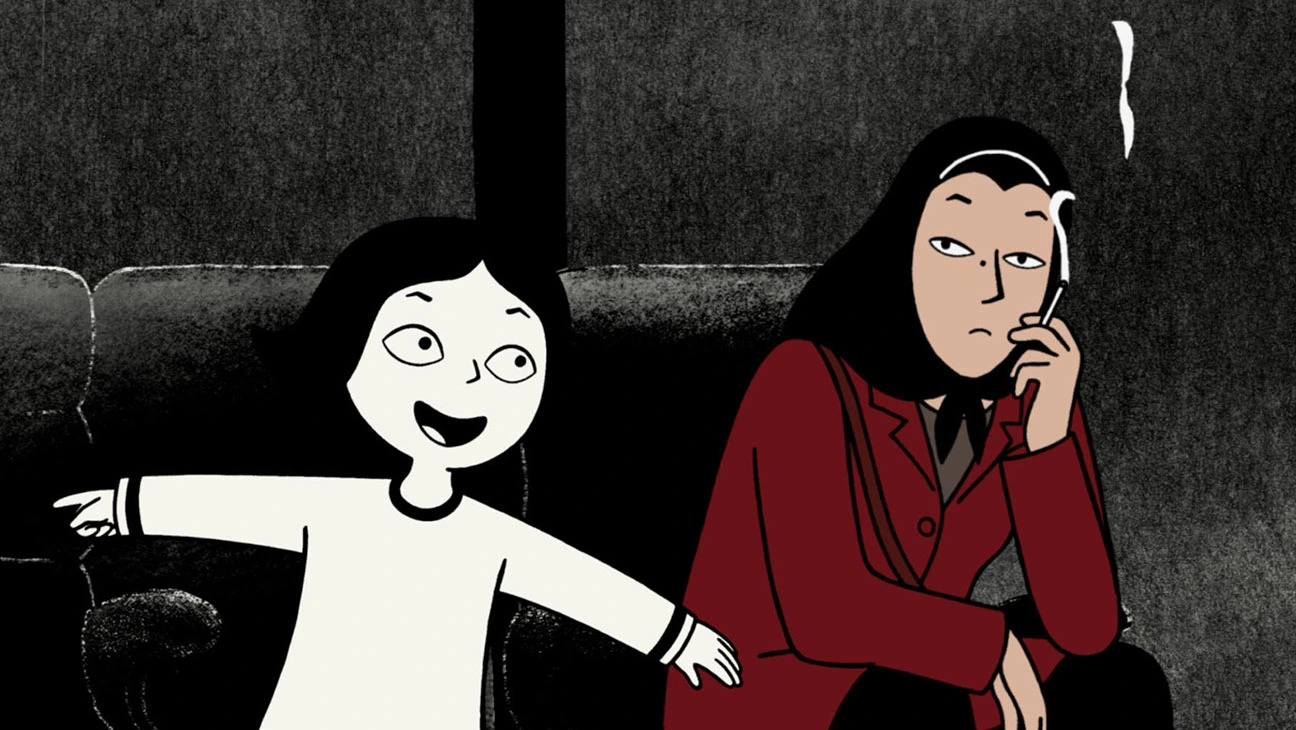Persepolis tells the story of Marjane Satrapi’s younger years in post-revolution Iran and adolescence in Europe. With her deceptively simplistic art style, it’s a graphic memoir full of personality and wit while not shying from the dark realities of her everyday life.
You have a friend who had this book, even if they didn’t read comics regularly. They may have even had the edition where it was two volumes. For a very long time, Persepolis was the comic for people who didn’t read comics. It had plenty of genuine literary approval, it was about something a lot of people didn’t know about and the art looked cool. I think that’s a lot of the reason why Persepolis has remained popular, even as Satrapi has moved more and more away from making comics.

Still, Satrapi’s story is an interesting one and it’s easy to be drawn into her and her family’s perseverance. It doesn’t dwell on tragedy but instead focuses on the minor details of her life in Iran and Europe. There is something so delightfully charming about the young Marjane buying bootleg tapes off the street or hanging out with anarchists and punks in Vienna. Satrapi’s bold black lines and playful, cartoonish style is in contrast with the more devastating parts, but it keeps the memoir grounded. Persepolis is surprisingly fun.
Rereading Persepolis this time, I still admire Satrapi’s bravery in putting her story out there while also being struck at how weak the storytelling is overall. Some of that is the nature of memoir, but Persepolis definitely follows the “and then this happened” formula. It feels like she wrote and drew without much planning ahead or editing and it’s a little too episodic to feel cohesive. It certainly gives the book a raw quality that’s appealing, but the past 15-plus years have seen so many graphic memoirs that feel stronger to me. Yes, Persepolis opened the door for those stories, but it has been overshadowed.
The movie version of Persepolis (2007, directed by Satrapi and Vincent Paronnaud) in some ways feels like a second draft of the graphic novel. It is animated rather than live-action and the art looks enough like Satrapi’s bold lines while adding some softer shading (and color in the framing sequence). The graphic memoir had a fairly rigid structure when it came to panels and page layouts and animation allows that to be looser and freer, which serves the story well.
Satrapi and Paronnaud pared down the graphic memoir to its essentials. The story is intact, but much is reduced. It doesn’t linger on the various places Satrapi lived in Vienna, but just presents them in a quick montage. Her marriage and subsequent divorce are given less time than the book, but rather than feeling rushed, it just shows how little the relationship actually mattered.
It emphasizes the humor in the book, too, such as the very funny sequence where Satrapi recounts her uncomfortable growth spurt. Dream sequences where Satrapi talks to God are also given a lighter touch.
The French voice acting is good, with Chiara Mastroianni as Marjane and Catherine Deneuve as her mother, but realistically, no one is watching this movie for the voice acting. It’s for the visuals, and it’s definitely strong there.
I have avoided watching animated versions of comics for this project overall, although so far, there haven’t been that many to choose from. I always was going to do Persepolis, of course, given the significance of the book itself, but I think it’s a story that wouldn’t work in live-action. The animation, along with Satrapi’s iconic art, makes it feel universal. Satrapi’s story is only her own but Persepolis makes her experiences feel relatable. The movie isn’t a replacement for the book but the two make good companions for each other.

